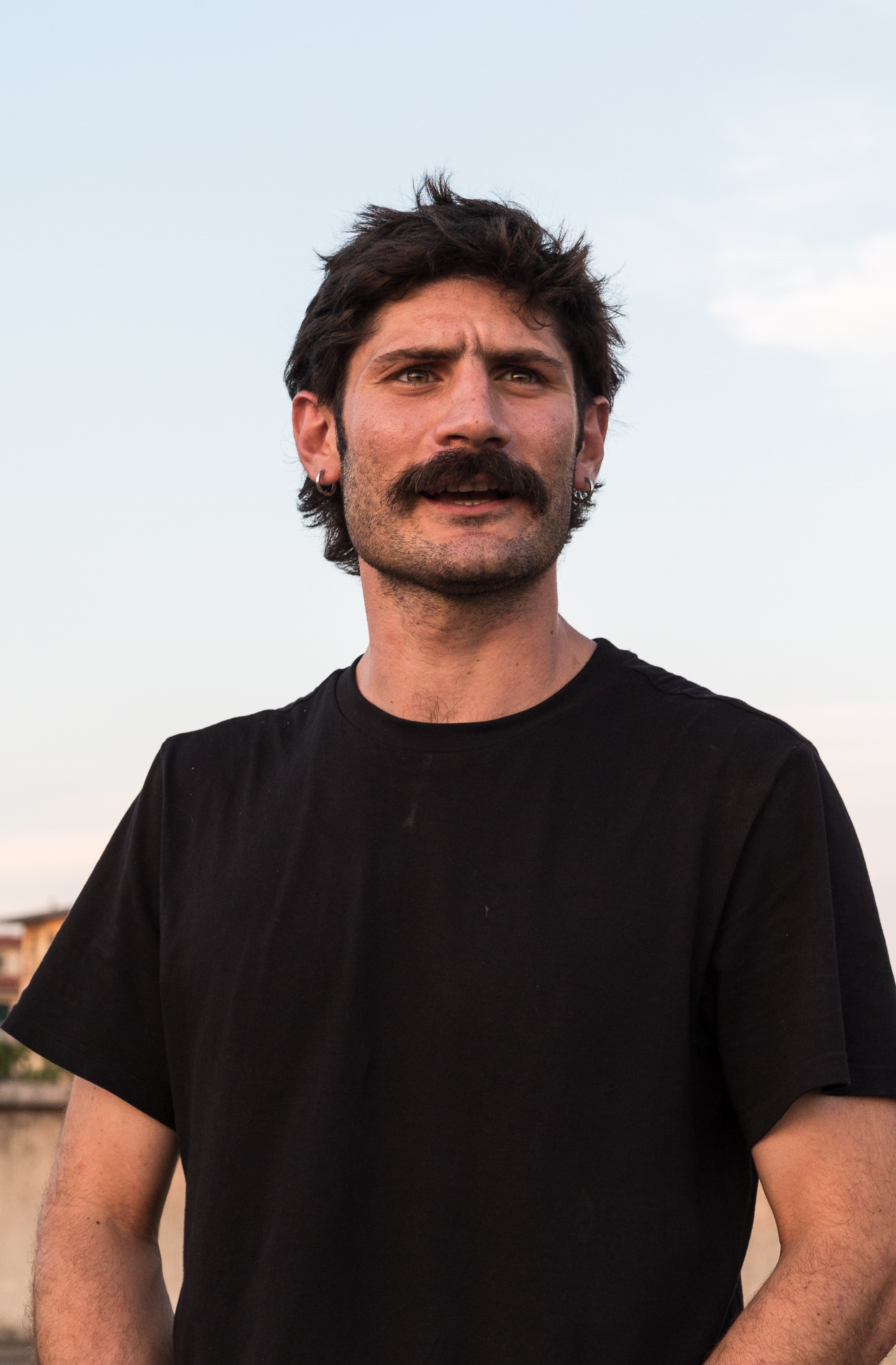STEFANO GIURI
Generazione Critica: Your education as an artist brought you to Manifattura Tabacchi as a participant of an art residency. From this experience you gave birth, in 2019, to ‘Toast Project Space’, using the original cage-concierge of the Florentine complex. Compared to the large and articulated spaces of Manifattura Tabacchi, you have chosen a decidedly small space and at the same time extremely connoted, what triggered your interest and how did you plan the program?
Stefano Giuri: In 2018 I returned to Florence after one year abroad. I started thinking about a space where ideas and projects could be developed. So, after the first months of residency, I was attracted to the former porter’s lodge of Manifattura Tabacchi. The aspect that interested me most about that architecture was that it could represent a dimensional and stylistic limit. And precisely these limits could become elements of strength.
GC: Toast Project is an example of adapting artistic practices to unconventional places, an attempt to go beyond the classic white cube and experiment with new spaces. In the contemporary art scene there are many examples of this kind of approach, if on the one hand it corresponds to the desire to create new experiences, on the other you think that it can also be read as a push against a certain conformism with respect to places dedicated to fruition and production of artistic practices?
SG: I don’t think that the conformism of the exhibition spaces concerns the type of place as much as the ways and times with which it operates. In the case of Toast, for example, the “void” that separates one operation from another is important. When there are no installations, people often ask “When will you do the next exhibition?”; by doing so they have the opportunity to perceive the spontaneity with which things happen, perhaps remaining in doubt whether something will happen or not. Not intervening is also significant, so that the bare architecture of the place can speak.
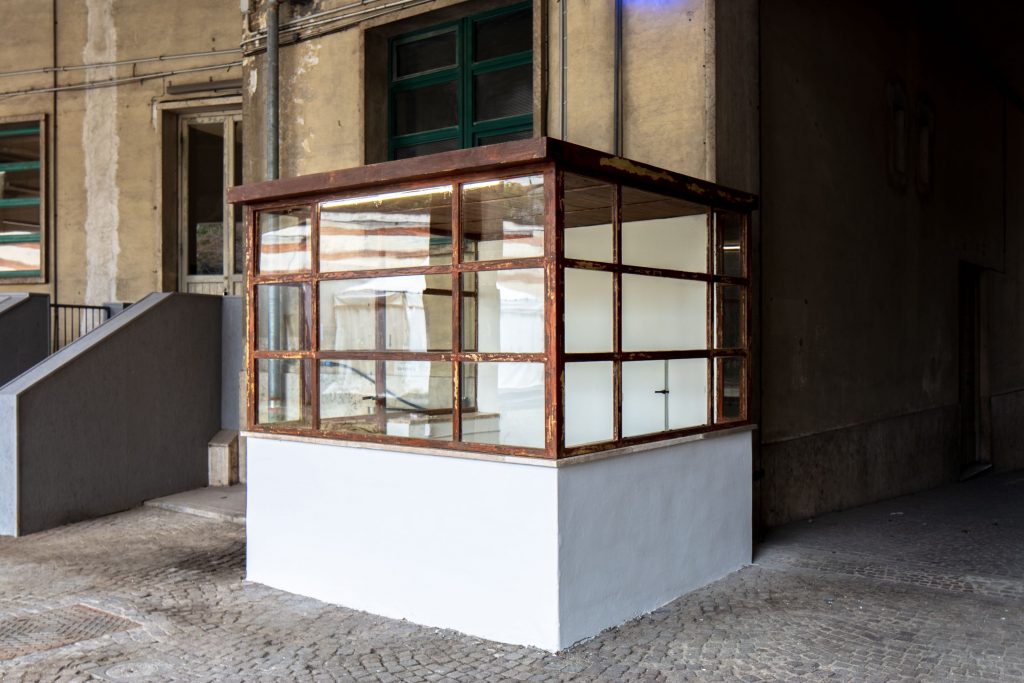
Toast Project Space, Manifattura Tabacchi, Firenze © Photo: Niccolo Vonci
GC: Certainly non-action, as well as emptiness, are non-neutral conditions. From what you write, it seems that the place is, after all, marginal for you compared to the action that can be activated. Is performance then perhaps the most congenial element? A codified event?
SG: I don’t think it’s marginal compared to stocks. Doing a certain type of intervention in Florence is different from doing it elsewhere. In the last exhibition, Prede by Lucia Cristiani, the space was completely deprived of the roof and the windows that protect it. In this sense Lucia emphasizes the centrality but also the fragility of the space…
It could be said that space itself requires and triggers a certain performativity of the bodies that relate to it.
GC: Works like ‘Huracàn’ by Lek M. Gjeloshi or ‘Lavoretto’ by Giuseppe De Mattia plays on the ambiguity of Toast Project Space to create a short circuit between the real and the artifact. These actions are amplified in a context in which the intended use of the place is not exposed and visible. Could it happen that in addition to those who see there are also those who do not see?
SG: I cannot say that it is essential to see. I hope it is.
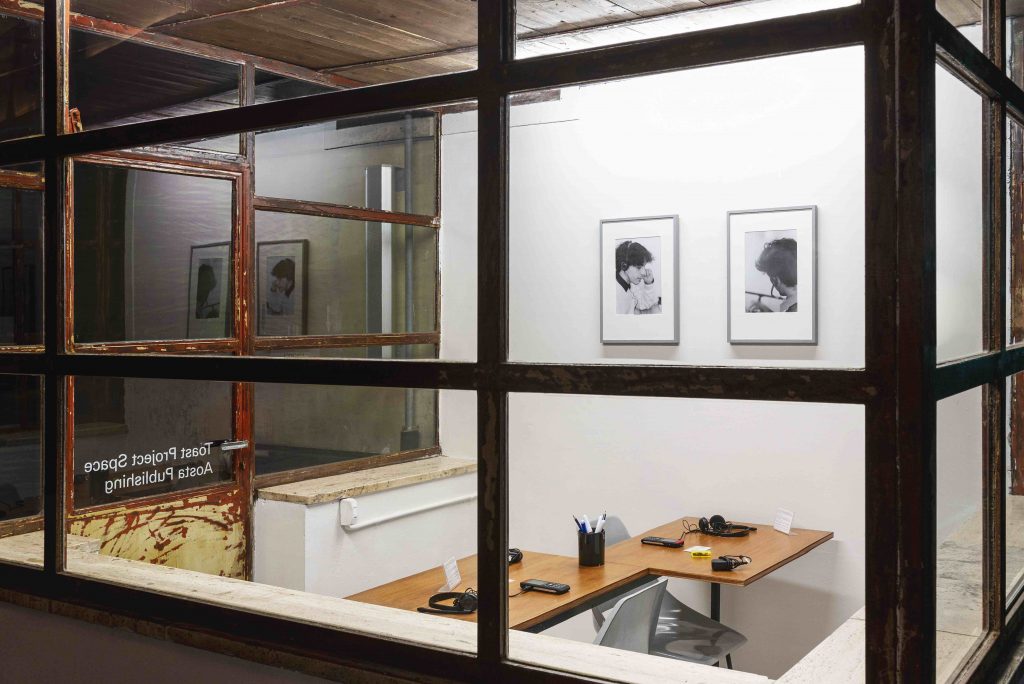
Giuseppe De Mattia, Lavoretto, 2021, Toast Project Space, installation view ©Photo: Leonardo Morfini, ADRYA
GC: The reduced and architecturally delimited dimension of Toast Project Space allows artists to appropriate it in an extremely personal way by interpreting the space and exploiting constraints. How did you manage the different interventions and relationships between the artists and Toast Project Space?
SG: In the case of Toast, the inevitability of relating to space brings out the different sensitivities and attitudes of the artists in including or excluding “reality” from their work.
GC: Why did you quote the word reality? Is it a concept that you fear even just typing?
SG: Not sure if reality exists. If it existed it certainly wouldn’t be where I live.
GC: Toast Project is also an example of an increasingly evident hybridization of roles: as an artist you found yourself curator and director of a space where you in turn host different artists. How did you come to this step and how do you manage to maintain a balance between artist and curator?
SG: I think that in all these roles it is important to challenge and ask questions about what you like and about the different ways of approaching the artistic process. In this sense, there is not much difference between working on a project as an artist or working with people you respect, abandoning the need to define roles or positions in favor of making art more free and interdisciplinary.
GC: What could be, in one of the best of all possible worlds, a freer and more interdisciplinary ‘making art’? Are there examples inside and outside the Italian borders to which you look with interest?
SG. I believe it is not specifically the role of the artist or the curator, but the attitude of making oneself available to the other. There are and there have been spirits that I feel similar: Brown Project Space, Cripta747, Sonnenstube, Localedue, Gelateria Sogni di Ghiaccio.
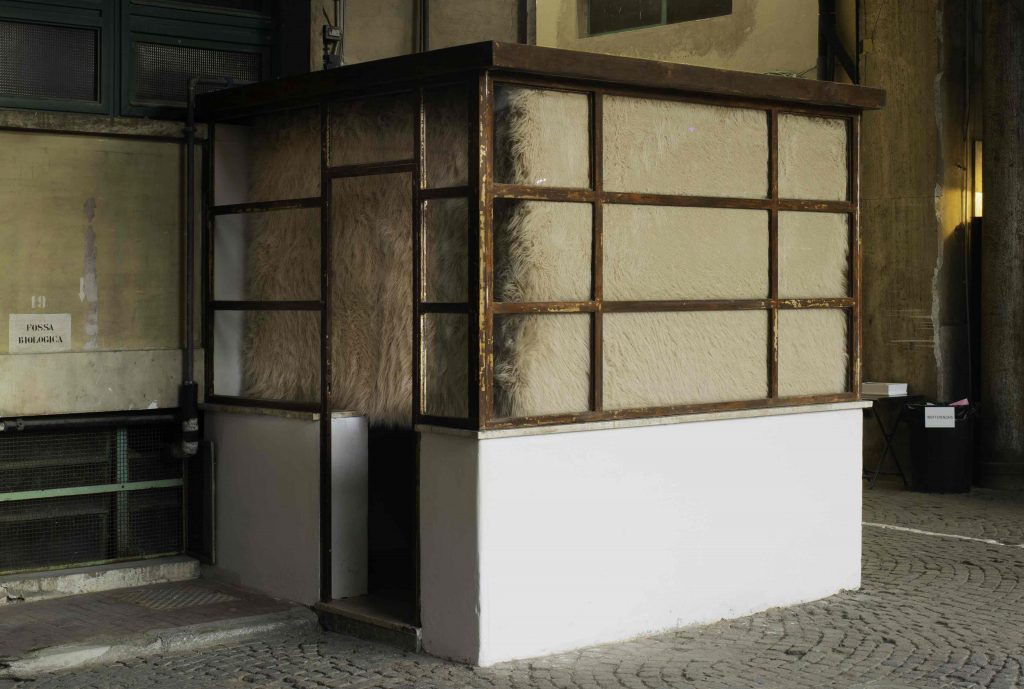
Marcello Spada, Chuck (2020), Toast Project Space, Installation view
GC: In curating the TOAST project or would you like to be supported by other figures? Could Toast Project be seen as a community place where not only different artists but also different curators can talk to each other?
SG: Toast’s projects often involve critics and curators, and artists who have contributed in different ways over time. As for Prede by Lucia Cristiani, Chunk by Marcello Spada, Candies by Matteo Coluccia edited with Gabriele Tosi or critical interventions such as that of Sonia D’Alto for Cieli Neri by Alice Visentin or Matteo Mottin for Habitat by Namsal Siedlecki. These experiences once again mark the characterization of Toast as a hybrid and meeting place for different figures ready to collaborate.
GC: Did the different collaborative experiences arise from an invitation (to a curator, to an artist…) or is it in the spontaneity of relationships, encounters and leaving space for different and unexpected outcomes? Have you ever had to set limits?
SG: There are no specific methods or rules. What unites all the collaborations is the interest in the artists I like and with whom I have the pleasure of sharing this project. Obviously it happens that projects change or stop over time depending on various factors that are always present in artistic production. At Toast, the limit isn’t so much an imposition as a workspace.
GC: Art and urban regeneration, an association of terms that is read very frequently between cultural planning and ministerial calls, how do you interpret it both from the point of view of the curator and the artist?
SG: (Follows the howling of Tarzan by Johnny Weissmuller) I am a firm believer in the irresponsibility of art, so I always find it difficult to combine the two. Certainly there is a cascade effect with respect to the artistic production in a certain place, but it is an aspect that I do not feel to consider.
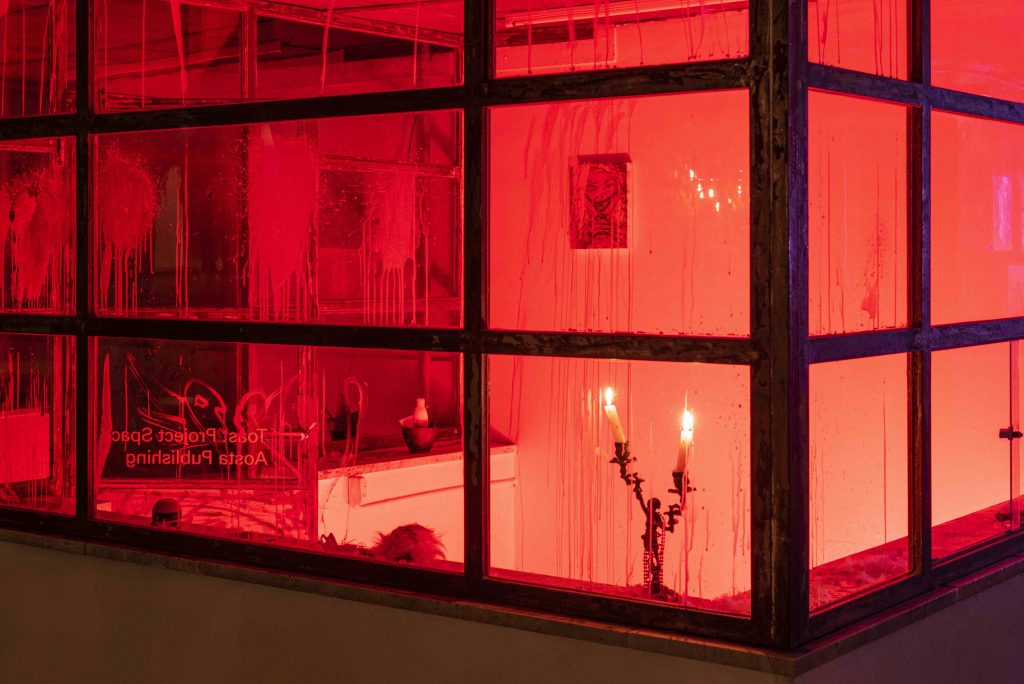
Edoardo Ciaralli, Piagnone (2022), Toast Project Space, installation view © Photo: Leonardo Morfini, ADRYA
GC: In 2020 Toast Project was also the birthplace of ‘Portafortuna public program’ in which independent Italian realities could confront different figures and operators of contemporary art. What did it mean to start the program?
SG: On birthdays you never know who is invited or where you will end up.
GC: Even on birthdays there are guests who disregard the confirmation, or people who you decide not to invite anymore. Was there much rejection? we do not ask for names and surnames … just a cross answer.
SG: Not that I remember.
GC: What are the future goals of toast project?
SG: Definitely the possibility of giving continuity to the programming. I also want to launch a franchise of project spaces or sandwich shops.
06/10/2022
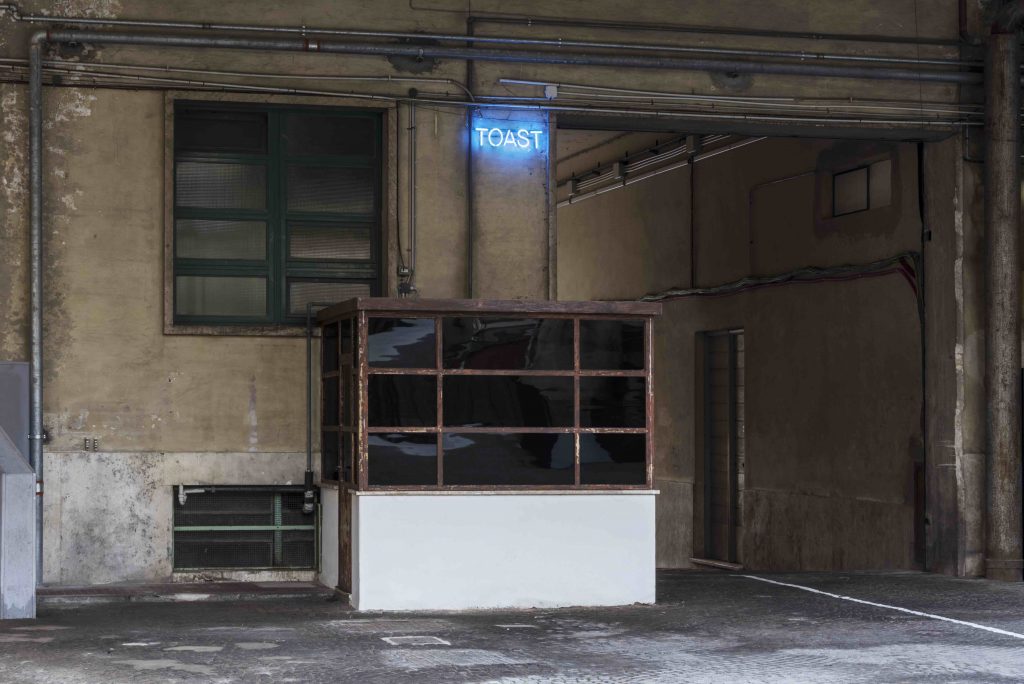
Lek M. Gjeloshi, Huracàn (2019), Toast Project Space, installation view © Photo: Leonardo Morfini

